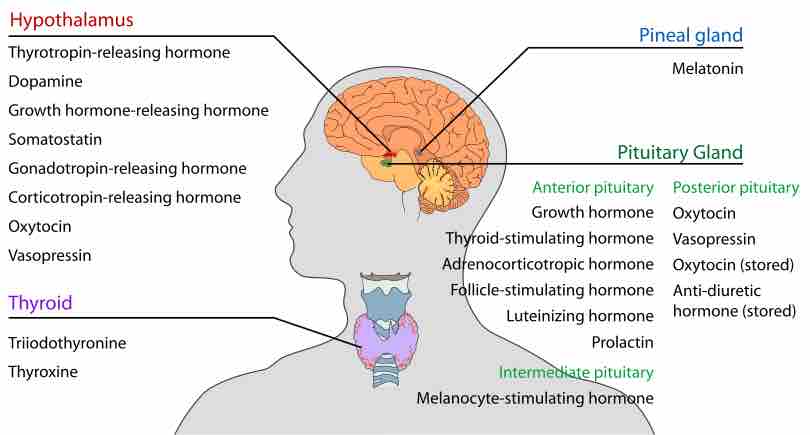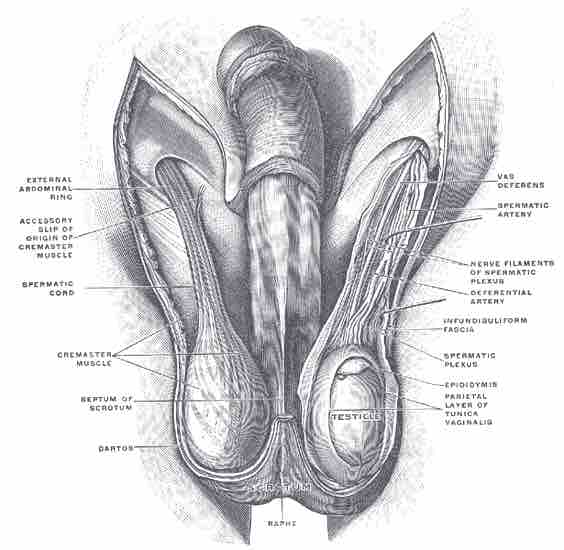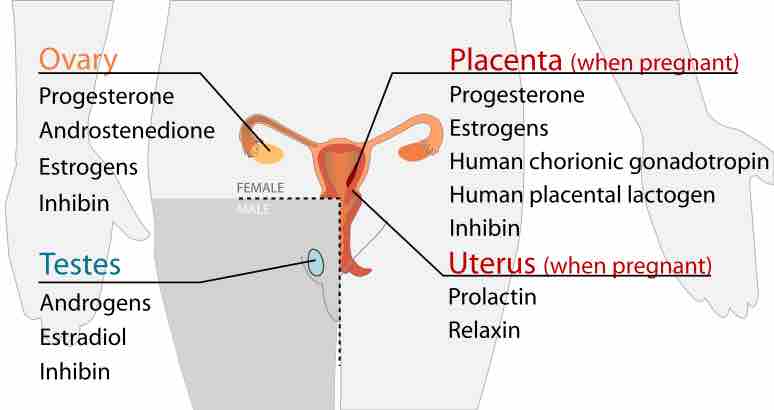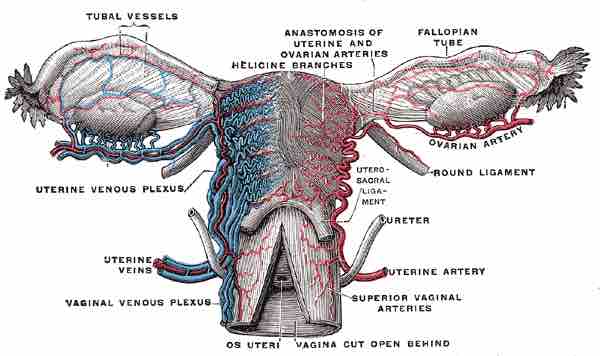Pineal Gland
The pineal gland is a small endocrine gland in the brain . It is located near the center of the brain, between the two hemispheres, tucked in a groove where the two rounded thalamic bodies join. The gland consists of two types of cells known as parenchymal and neuroglial cells.

Nervous system endocrine glands: the pineal gland
The pineal gland, found in the brain, produces the hormone melatonin.
The main hormone produced and secreted by the pineal gland is melatonin. The rate of melatonin production is affected by the photoperiod. Collaterals from the visual pathways innervate the pineal gland. During the day photoperiod, little melatonin is produced; however, melatonin production increases during the dark photoperiod (night). In some mammals, melatonin has an inhibitory affect on reproductive functions by decreasing production and maturation of sperm, oocytes, and reproductive organs. Melatonin is an effective antioxidant, protecting the CNS from free radicals such as nitric oxide and hydrogen peroxide. Lastly, melatonin is involved in biological rhythms, particularly circadian rhythms such as the sleep-wake cycle and eating habits .
Pineal gland
The pineal gland is an endocrine gland located in the middle of the brain. It is responsible for the production of melatonin, a hormone which acts as an antioxidant and is involved in the regulation of biological rhythms.
Gonads
The gonads are additional types of endocrine glands . They are the sex organs and include the male testes and female ovaries. Their main role is the production of steroid hormones. The testes produce androgens, which allow for the development of secondary sex characteristics and the production of sperm cells. Testosterone, the most prominent androgen in males, stimulates the development and functioning of the primary sex organs . It also stimulates the development and maintenance of secondary male characteristics, such as hair growth on the face and the deep pitch of the voice.

Testes
The testes produce androgens, such as testosterone, which regulate primary sex organ development and function, as well as the development of secondary sex characteristics and the production of sperm cells.

Endocrine system: gonads and their hormones
The gonads are the sex organs. Male testes produce androgens, while female ovaries produce estrogen and progesterone.
The ovaries produce hormones, such as estrogen and progesterone, which cause secondary sex characteristics and prepare the body for childbirth. Estrogen increases at the time of puberty, causing the growth of the uterus and vagina. Without estrogen, egg maturation would not occur. Estrogen is also responsible for secondary sex characteristics such as female body hair and fat distribution. Estrogen and progesterone are responsible for the development of the breast and for the uterine cycle. Progesterone is a female hormone secreted by the corpus luteum after ovulation during the second half of the menstrual cycle. It prepares the lining of the uterus for implantation of a fertilized egg and allows for complete shedding of the endometrium at the time of menstruation. In the event of pregnancy, the progesterone level remains stable beginning a week or so after conception .

Ovaries
The ovaries produce estrogen and progesterone, which are hormones responsible for the development of sexual characteristics in females and the preparation of female bodies for pregnancy and childbirth.